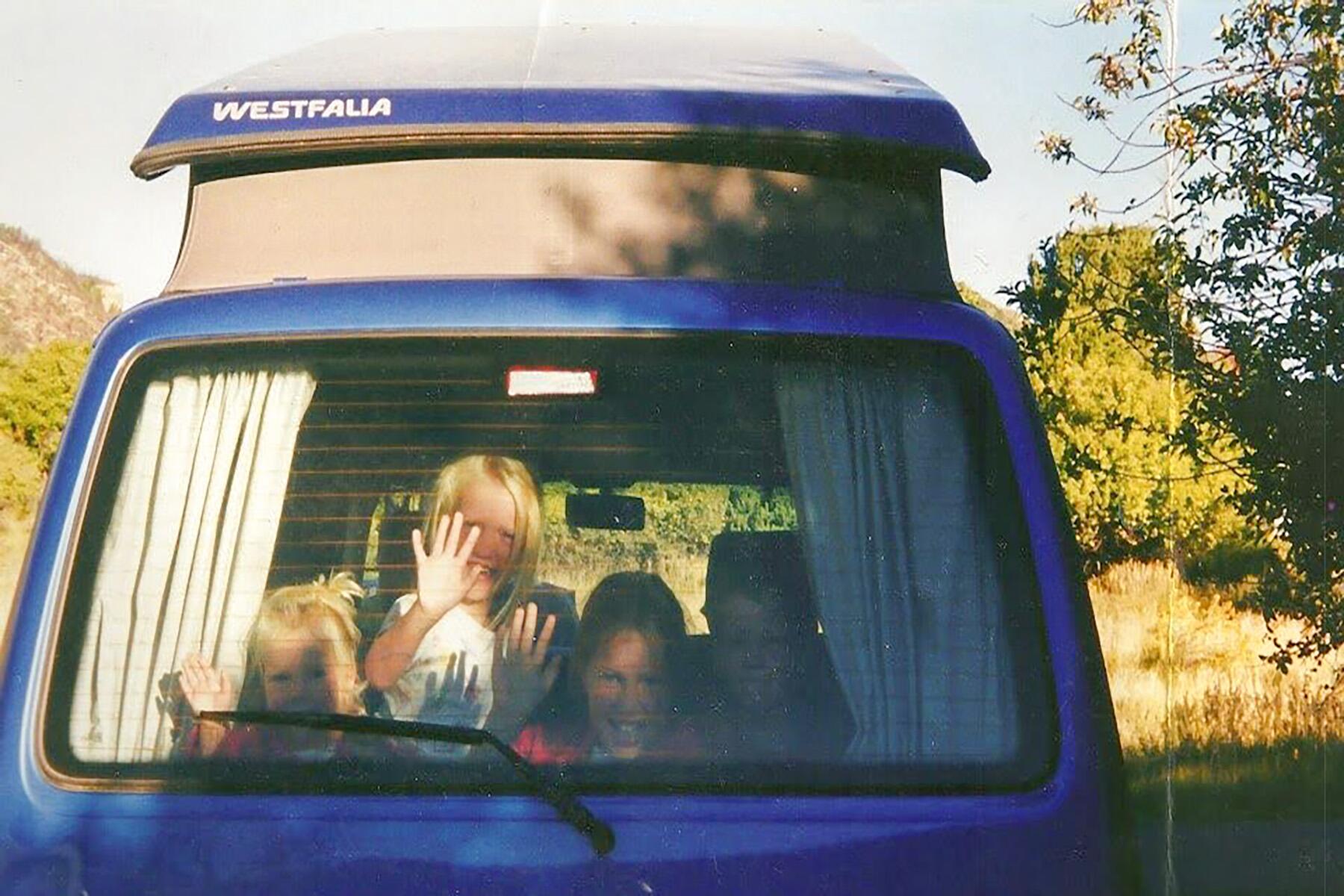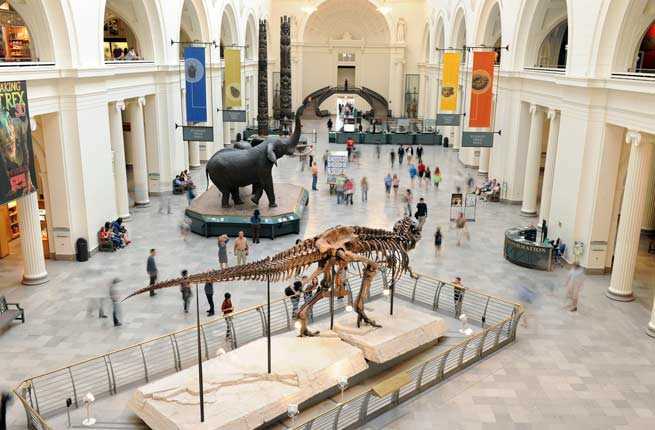
If you happen to have children under the age of 12, we bet you know a thing or two about dinosaur obsession. So while you've probably taken the kids to see fossils in a museum, there are plenty of other ways to explore the world of dinosaurs—from participating in fossil digs to hiking along paths with ancient footprints. Plus you never know what you might find. So keep digging, and read on for our look at some of the world’s best spots for dinosaur fans.—Christina Valhouli
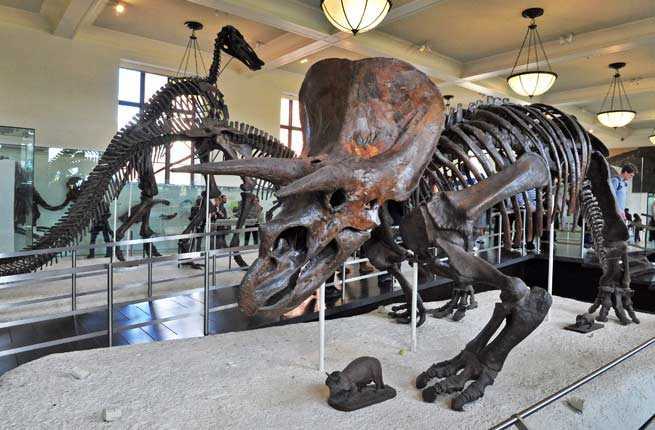
American Museum of Natural History
New York City
The American Museum of Natural History represents dinosaur heaven for many children and adults. The David H. Koch Dinosaur Wing has two separate halls, featuring over 100 types of dinosaur fossils and models. Some of the highlights include a Tyrannosaurus Rex and Apatosaurus, as well as an Allosaurus, which is displayed feeding on the partial carcass of an Apatosaurus. There’s also a small dinosaur dig for children in The Discovery Room.
Insider Tip: The fossils on display represent only 5 percent of the museum’s collection of 2,000 dinosaur fossils.
PLAN YOUR TRIP: Visit Fodor's New York City Guide
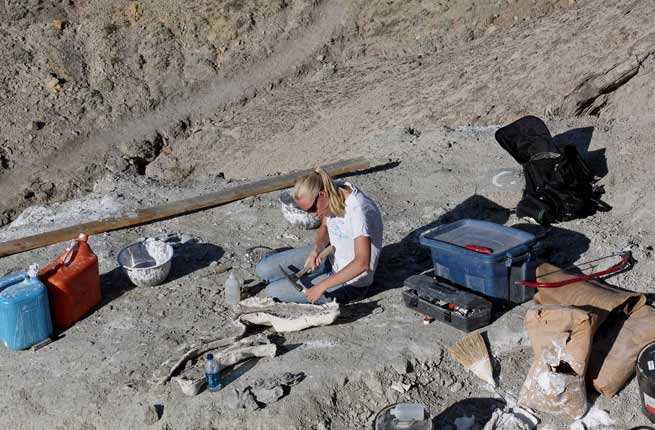
Dinosaur National Monument
Colorado and Utah
Located on the border of Colorado and Utah, what makes Dinosaur National Monument a standout is that visitors can view dinosaur fossils that are still embedded in rock. The Quarry Exhibit Hall here showcases 1,500 dinosaur bones, including Stegosaurus and Diplodocus. Once you’re done looking at the dinos, head outside for hiking, white water rafting, or take a scenic drive. Keep in mind that the Utah side contains the fossils while the Colorado portion offers access to the canyons.
Insider Tip: Both Colorado and Utah are brimming with dinosaur-related sites. Other options include Brigham Young University Museum of Paleontology and the Natural History Museum of Utah at the Rio Tinto Center, while Colorado also has Dinosaur Diamond, which features fossils and rock art.
PLAN YOUR TRIP: Visit Fodor's Colorado and Utah Guides
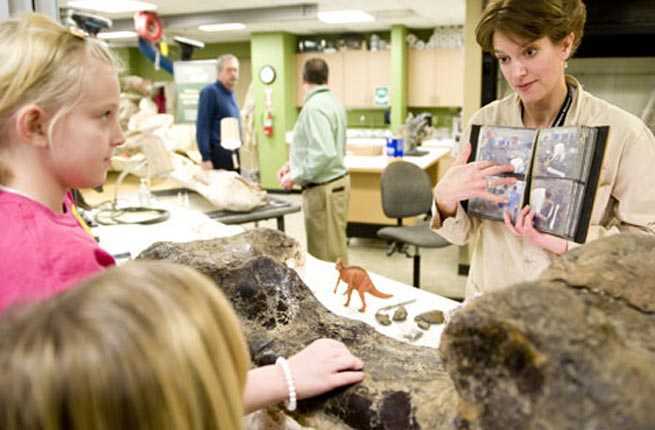
The Children’s Museum of Indianapolis
Indiana
Dinosaur fans should make a beeline for the Dinosphere inside the Children’s Museum of Indianapolis. This museum is famous for its rare specimens, including a Gorgosaur with a brain tumor and the Dracorex hogwartsia, which looks like a dragon. Its name means “Dragon King of Hogwarts” and it is a newly discovered species. In early March, the museum will display one of only four mummified dinosaurs in the world; it will be on display for approximately 10 years.
Insider Tip: The museum also leads dinosaur digs in Faith, South Dakota each year. The area is home to one of the world’s largest fossil beds of duckbill dinosaurs.
PLAN YOUR TRIP: Visit Fodor's Indianapolis Guide
Dinosaur State Park
Connecticut
Located 20 minutes south of Hartford, the big draw at Dinosaur State Park is dinosaur tracks made 200 million years ago by Theropods. From May through October, visitors can make footprint molds in a casting area. There are also two miles of nature trails to explore in Dinosaur State Park Arboretum.
Insider Tip: The park’s biggest annual celebration is Dinosaur State Park Day, which is held every August.
PLAN YOUR TRIP: Visit Fodor's Hartford and the Connecticut River Valley Guide

The Natural History Museum of Los Angeles County
Los Angeles
The Natural History Museum opened its 14,000-square-foot Dinosaur Hall in 2011. Many of the fossils were found by paleontologists at the museum’s own Dinosaur Institute. The museum features the world's only Tyrannosaurus rex growth series, displaying a baby, juvenile, and sub-adult. There’s also a 25-foot-long Stegosaurus.
Insider Tip: Purchase a combination ticket to gain discounted admission to the Page Museum at the La Brea Tar Pits, which bills itself as the only active urban paleontological excavation site in the US. The Page Museum showcases Ice Age fossils—including saber-toothed cats and mammoths—which have been found in asphalt deposits on-site.
PLAN YOUR TRIP: Visit Fodor's Los Angeles Guide
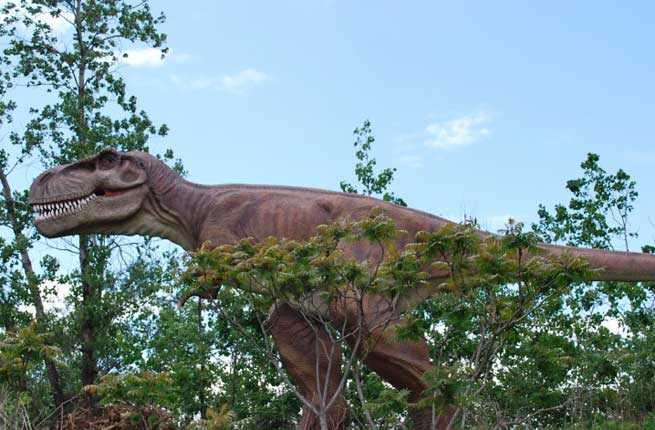
Field Station Dinosaurs
New Jersey
New Jersey may not be the first place people think of to spot dinosaurs, but that changed with the opening of Field Station Dinosaurs. Located just off the New Jersey Turnpike, think of it as a mini Jurassic Park, featuring 32 animatronic life-sized dinosaurs that roar, blink, breathe, and move their necks, arms, and tails. Visitors follow a path around a wooded area to view the dinosaurs. There are also workshops, games, and activities for kids, including digging for fossils in a sandpit. Field Station Dinosaurs re-opens in May for the season.
Insider Tip: The New Jersey state dinosaur is the Hadrosaurus. This duck-billed dinosaur once roamed the forests and swamps along the bays of New Jersey's ancient seacoast.
PLAN YOUR TRIP: Visit Fodor's New Jersey Guide

Dinosaur Ridge
Colorado
Located in Morrison, Dinosaur Ridge offers a combination of walking trails and exhibits in an outdoor setting. Break out the hiking shoes and set off on the two-mile Dinosaur Ridge Trail, which has hundreds of dinosaur tracks and a quarry of dinosaur bones, while the Triceratops Trail winds between vertical walls of sandstone and into reclaimed clay pits. You'll see footprints from four different types of dinosaurs.
Insider Tip: What do dinosaur tracks have in common with belly buttons? Lots. The footprints at Dinosaur Ridge are known as “innies” because visitors can see where animals pushed into the sediment, while the Triceratops Trail features “outies.”
PLAN YOUR TRIP: Visit Fodor's Colorado Guide

Natural History Museum
London
Wake up early to beat the crowds at London’s Natural History Museum. The entrance hall has a giant Diplodocus skeleton, but head to the Dinosaur Gallery to see even more. Visitors can walk along an elevated platform to view a Camarasaurus. There’s also a Triceratops, and the half-buried skeleton of the Edmontosaurus is lying in its death position.
Insider Tip: Don’t miss the enormous, animatronic T. rex at the museum. His teeth are 15 centimeters long.
PLAN YOUR TRIP: Visit Fodor's London Guide

The Field Museum
Chicago
This enormous museum was funded by retail magnate Marshall Field. One of the biggest attractions at the Field Museum is Sue, the largest and most complete T. rex in the world. The real skull is so heavy, weighing over 500 pounds, that it’s on display on the mezzanine level of the museum.
Insider Tip: Sue the T. rex is named for Sue Hendrickson, the fossil hunter who discovered her in South Dakota in 1990.
PLAN YOUR TRIP: Visit Fodor's Chicago Guide
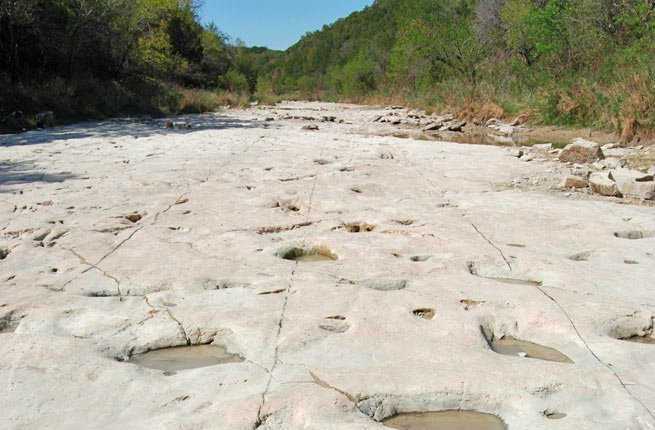
Dinosaur Valley State Park
Texas
This area, known as the dinosaur capital of Texas, contains some of the best preserved dinosaur tracks in the world—but they’re located in a riverbed, so be sure to check river conditions before visiting. The tracks, located within the Paluxy River at Dinosaur Valley State Park, are over 100 million years old, and they represent the longest existing dinosaur trackway in North America.
Insider Tip: There are about 1,500 dinosaur tracks in the riverbed.
PLAN YOUR TRIP: Visit Fodor's Texas Guide
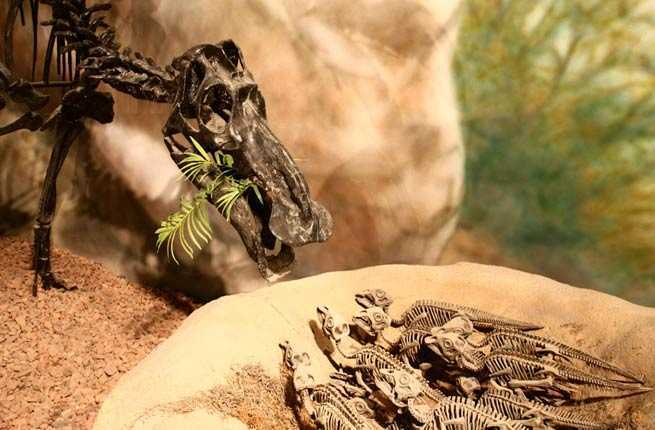
Wyoming Dinosaur Center
Wyoming
Located in the town of Thermopolis, the Wyoming Dinosaur Center is unique for having an excavation site just down the street. There are more than 30 mounted skeletons here, but the star attraction is Jimbo, a 106-foot-long Supersaurus, one of the longest dinosaurs in the world. Jimbo is the largest and most complete specimen ever found. The center also has the only Archaeopteryx in North America.
Insider Tip: Want to get hands-on? Sign up for the center’s “dig for a day” program, which takes place just down the street at one of world’s richest bone fields.
PLAN YOUR TRIP: Visit Fodor's Wyoming Guide
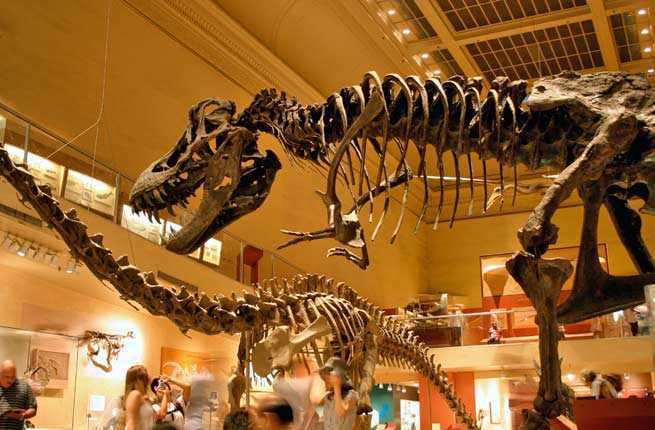
The National Museum of Natural History
Washington, D.C.
April is a prime time to visit Washington, D.C. to see the cherry trees in bloom but for dinosaur lovers, it marks another significant event—the arrival of a new T. Rex. The National Museum of Natural History’s new T. Rex, purchased from Montana, will arrive on April 15 and will be displayed in various pieces. It will be the centerpiece of a new, 31,000-square-foot dinosaur exhibit hall that is scheduled to open in 2019. Although the dinosaur halls are closing at the end of April for the renovation, visitors can still see dinosaur fossils in other parts of the museum.
PLAN YOUR TRIP: Visit Fodor's Washington, D.C. Guide

The Museum of Natural Sciences
Brussels
This museum, also known as the Musée des Sciences Naturelles, has the biggest dinosaur gallery in Europe. There are more than 35 skeletons on display, and highlights include 30 Iguanodons that were discovered in 1878. There’s also an on-site “paleoLAB” featuring interactive exhibits.
Insider Tip: Nine of the Iguanodons are shown in their “historic kangaroo pose,” which means they're standing upright on two legs.
PLAN YOUR TRIP: Visit Fodor's Brussels Guide

